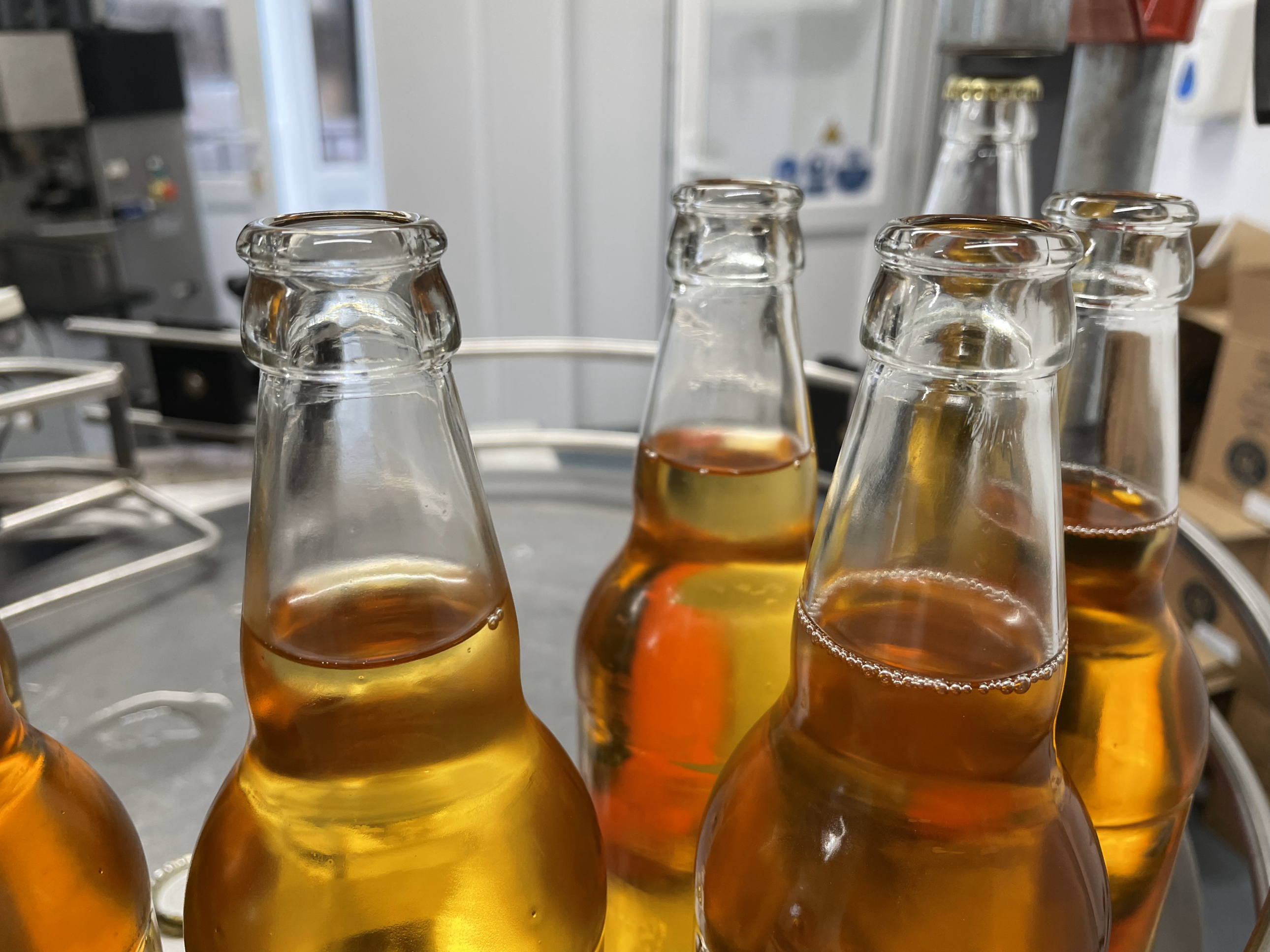Checking Your Cider: Knowing When It's Ready for Bottling
Checking Your Cider: Knowing When It's Ready for Bottling

Making cider is a rewarding process that combines tradition with a bit of science. One of the most crucial steps in cider making is knowing when your cider is ready for bottling. This involves checking the cider's specific gravity and acidity using equipment like thermometers and hydrometers and pH meters.
Equipment Needed
- Hydrometer: This tool measures the specific gravity of your cider, which indicates the sugar content. By comparing the original gravity (before fermentation) and the final gravity (after fermentation), you can determine the alcohol content and ensure fermentation is complete
- Thermometer: Accurate temperature readings are essential for consistent hydrometer measurements. Most hydrometers are calibrated at 60°F (15.6°C), so it's important to adjust your cider's temperature accordingly
- pH Meter: To measure the acidity of your cider, a pH meter. This helps ensure your cider has the right pH to prevent bacterial infection
Checking Specific Gravity
To check the specific gravity:
- Clean all equipment.
- Fill a test cylinder with a sample of your cider.
- Place the hydrometer into the cider and give it a slight spin.
- Take the reading where the surface of the cider intersects the scale.
- Document the specific gravity reading
The specific gravity should be stable over a few days, indicating that fermentation is complete. Typically, a final gravity reading around 0.998 or lower suggests that your cider is ready for bottling
Measuring Acidity
Acidity can be measured using a pH meter. The ideal pH for cider is between 3.2 and 3.8. Adjusting the acidity can be done by adding malic acid or calcium carbonate, depending on whether you need to increase or decrease the acidity
Common Mistakes to Avoid
- Inconsistent Fermentation Temperature: Maintaining a consistent temperature is crucial. Fluctuations can stress the yeast, leading to off-flavours or stuck fermentation
- Poor Sanitation: Always clean your equipment thoroughly. Contaminants can spoil your cider, causing undesirable flavours and aromas or bacterial infections
- Rushing the Process: Patience is key. Allow fermentation to complete fully before bottling to avoid over-carbonation or exploding bottles
- Incorrect Specific Gravity Readings: Ensure your hydrometer is calibrated and your cider is at the correct temperature for accurate readings
- Ignoring Acidity Levels: Proper acidity balance is essential for a pleasant taste. Regularly check and adjust the pH as needed
Best Practices for Bottling
- Clean Everything: Thoroughly clean and sanitise all bottles, caps, and equipment to prevent contamination
- Use Priming Sugar for Carbonation: If you want carbonated cider, add a precise amount of priming sugar to your cider before bottling. This will create natural carbonation during bottle conditioning
- Avoid Oxygen Exposure: When transferring cider to bottles, minimize splashing to avoid introducing oxygen, which can spoil the cider
- Leave Headspace: Ensure you leave about an inch of headspace in each bottle to allow for expansion and carbonation
- Seal Tightly: Use appropriate caps or crown caps to ensure an airtight seal. This is crucial for maintaining carbonation and preventing spoilage
- Store Properly: Store your bottled cider in a cool, dark place. This helps maintain its quality and allows the flavours to mature
Packaging and Storing Your Cider
Once your cider is ready for bottling, you have several options for packaging and storage:
Glass Bottles: These are the most common and preferred method for storing cider. They provide an airtight seal and do not react with the cider's acidity. You can use capsules, swing-top lids, or corks for sealing.
Bag in Boxes: The bag in box system is the perfect solution to the problem of cider storage and serving. As the cider is drawn from the box via the tap, the bag collapses without letting in any air, keeping the cider fresh to the last drop. Cider (or wine) will remain in good condition for weeks or months and can be drawn off by the glass.
Our bag in boxes are suitable for storing dry or pasteurised cider. Cider can be stored in these containers for up to 24 months. The disposable bag in box has a double skinned inner bag which fits into a strong cardboard box a strong secure solution.
Plastic Jerrycans: Jerry cans are perfect for shorter term storage and dispensing. Ensure your cider is stable before filling otherwise they will expand.
Store your bottled cider in a cool, dark place to maintain its quality. Properly stored cider can last from 1 to 10 years, depending on factors like alcohol content, clarity, and carbonation.
By using the right equipment and methods, avoiding common mistakes, and following best practices for bottling, you can ensure your cider is perfectly balanced and ready for bottling. Happy cider making!
Feel free to contact us either on the phone 01404 890093 or via email: sales@vigopresses.co.uk if you have any questions or need further assistance with your cider-making process.
